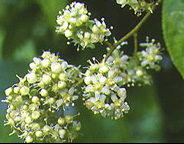 |
 |
|||
| APRIL 23, 2008 | ||||
 | Visible Darkness: Pursuing the Biological Basis of Depression By bringing to light the biological basis of depression, researchers across Emory University are on a quest to personalize treatment and alleviate anguish. With as many as 10 percent of Americans diagnosed with clinical depression annually, advances developed through depression research are sure to have far-reaching implications.Read more . . . |
|||
 |
Monkeys Show Toy Preferences Based on Gender Researchers at Yerkes National Primate Research Center have found that rhesus monkeys' gender-specific toy preferences parallel the preferences of human children, suggesting that preferences reflect hormonally influenced behavioral biases and can develop without socialization factors, such as encouragement to play with gender-specific toys. Read more . . . |
|||
 |
Secrets of a Silent Killer: Tracking the Clues to Hepatitis C As more people than ever experience liver failure due to the hepatitis C virus, researchers are working against time to solve the mystery of why the immune systems of some people can outwit the virus and those of others cannot. Read more . . . |
|||
 |
Plant Extract Shows Promise for Treating Inflammation A Chinese vine called "Walk Seven Steps and Die" and "Intestine Breaking Plant" sounds more like poison than cure. In fact, it is both. Emory scientists are finding new ways to turn triptolide, an extract from the T. Wilfordii plant, into safe treatments for rheumatoid arthritis, inflammation, and inflammatory bowel disease. Read more . . . |
|||
 |
Outwitting Salmonella Infection Salmonella are wily and obnoxious bacterial invaders--escape artists capable of evading multiple immune responses and causing a harsh and debilitating intestinal infection. Researchers are closer to understanding how these bacteria thwart two major immune defenses and set up shop in a host organism. Read more . . . |
|||
 |
 |
|||